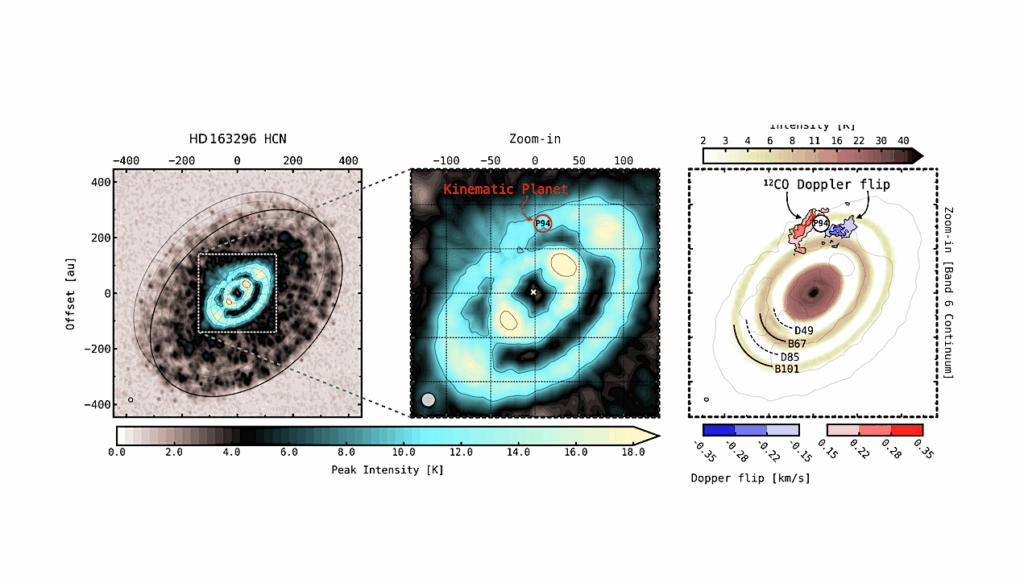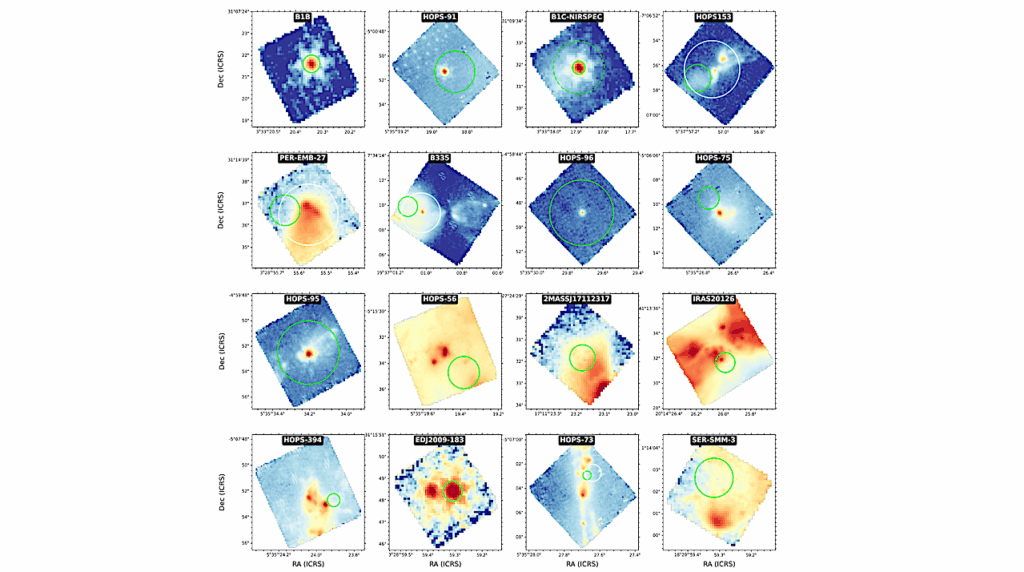The Galaxy Activity, Torus, and Outflow Survey (GATOS). (VI): Polycyclic Aromatic Hydrocarbon Emission in the Central Regions of Three Seyferts
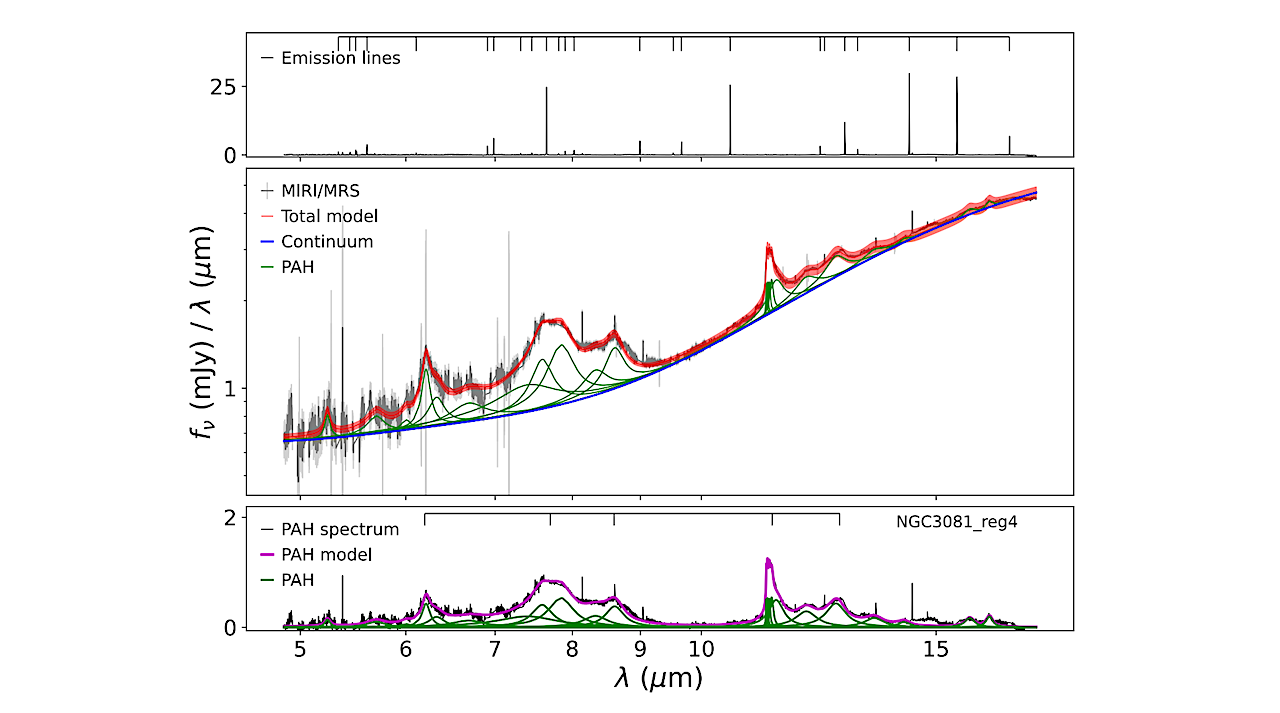
We analyze JWST MIRI/MRS IFU observations of three Seyferts and showcase the intriguing polycyclic aromatic hydrocarbon (PAH) emission characteristics in regions of ∼500pc scales over or around their active galactic nuclei (AGN).
Combining the model predictions and the measurements of PAH features and other infrared emission lines, we find that the central regions containing a high fraction of neutral PAHs with small sizes, e.g., those in ESO137-G034, are in highly heated environments, due to collisional shock heating, with hard and moderately intense radiation fields. Such environments are proposed to be associated with inhibited growth or preferential erosion of PAHs, decreasing the average PAH size and the overall abundance of PAHs.
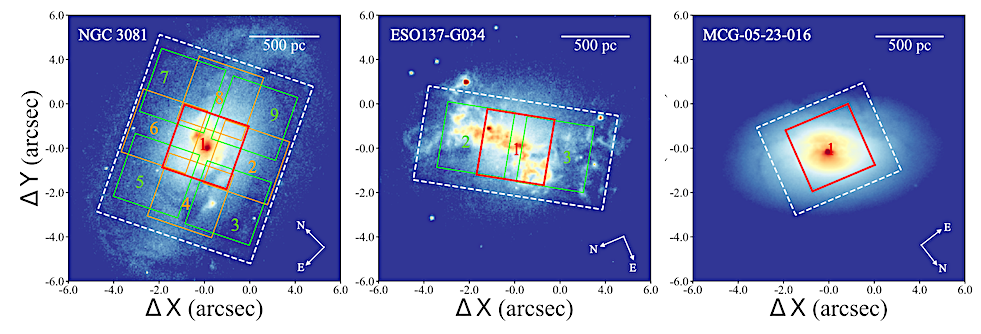
Illustration of coverages of the JWST/MRS observations (white dashed rectangles for channel 1 field of view) and relative positions of the 3 ′′ ×3 ′′ apertures (colored rectangles with corresponding numbers) of our targets, with HST/WFC3 F673N or F606W (MCG-05-23-016) band imaging as the background. A scale bar of 500 pc is in the top-right and a compass is in the bottom-right of each panel. — astro-ph.GA
We additionally find that the central regions containing a high fraction of ionized PAHs with large sizes, e.g., those in MCG-05-23-016, are likely experiencing severe photo-ionization because of the radiative effects from the radiative shock precursor besides the AGN. The severe photo-ionization can contribute to the ionization of all PAHs and further destruction of small PAHs. Overall, different Seyferts, even different regions in the same galaxy, e.g., those in NGC 3081, can contain PAH populations of different properties.
Specifically, Seyferts that exhibit similar PAH characteristics to ESO137-G034 and MCG-05-23-016 also tend to have similar emission line properties to them, suggesting that the explanations for PAH characteristics of ESO137-G034 and MCG-05-23-016 may also apply generally. These results have promising application in the era of JWST, especially in diagnosing different (i.e., radiative, and kinetic) AGN feedback modes.
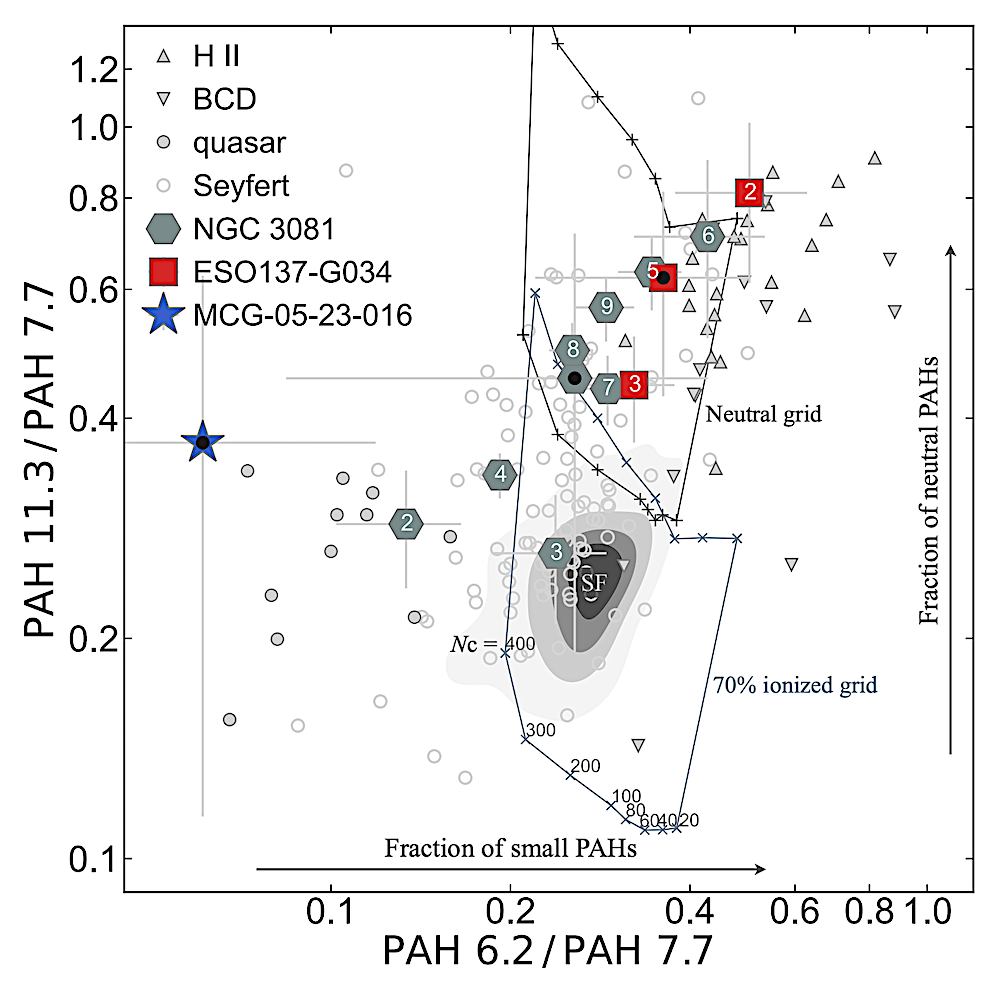
Diagnostic diagram of PAH band ratios 11.3 µm/7.7 µm versus 6.2 µm/7.7 µm for the 3 ′′ × 3 ′′ (∼ 500 pc) apertures as illustrated in Figure 1. The red rectangles, blue star, slategray hexagons represent the measurements of apertures in ESO137-G034, MCG-05-23-016, and NGC 3081, respectively, where points with a black dot pertain to the innermost aperture (i.e., aperture 1) of each target and other apertures are number-coded the same as in Figure 1. The gray contours marked by “SF” represent the PAH band ratio distribution of 185 spatially resolved spaxels in 29 star-forming galaxies measured by Zhang et al. (2022). The open small circles indicate the PAH band ratios of 83 Seyferts with the measurements of all the three PAH features available from the literature (i.e., Smith et al. 2007; O’Dowd et al. 2009; Diamond-Stanic & Rieke 2010; Gallimore et al. 2010; Sales et al. 2010; PAH measurements of upper limits are excluded). The filled small circles indicate the PAH band ratios of 11 low-redshift quasars with all the three PAH features detected by Xie & Ho (2022). The upward and downward small triangles, respectively, indicate the PAH band ratios of 29 giant H II regions in 3 local group galaxies measured by Lebouteiller et al. (2011) and 14 blue compact dwarf galaxies (BCDs) measured by Hunt et al. (2010) and Lebouteiller et al. (2011). The gray grids represent model predictions of PAH band ratios by Rigopoulou et al. (2024), respectively, for neutral (top grid, marked by ‘+’) and 70% ionized (bottom grid, marked by ‘×’) PAHs of different sizes (i.e., with carbon number NC = 20 − 400 from the right boundary to the left boundary of each grid), in the interstellar radiation field (ISRF; the top boundary of each grid) and the 103× ISRF (the bottom boundary of each grid). — astro-ph.GA
Lulu Zhang, Ismael García-Bernete, Chris Packham, Fergus R. Donnan, Dimitra Rigopoulou, Erin K. S. Hicks, Ric I. Davies, Taro T. Shimizu, Almudena Alonso-Herrero, Cristina Ramos Almeida, Miguel Pereira-Santaella, Claudio Ricci, Andrew J. Bunker, Mason T. Leist, David J. Rosario, Santiago García-Burillo, Laura Hermosa Muñoz, Francoise Combes, Masatoshi Imanishi, Alvaro Labiano, Donaji Esparza-Arredondo, Enrica Bellocchi, Anelise Audibert, Lindsay Fuller, Omaira González-Martín, Sebastian Hönig, Takuma Izumi, Nancy A. Levenson, Enrique López-Rodríguez, Daniel Rouan, Marko Stalevski, Martin J. Ward
Comments: 20 pages (6 pages in the appendix), 6 figures in the main text, ApJL resubmitted after addressing referee’s comments
Subjects: Astrophysics of Galaxies (astro-ph.GA)
Cite as: arXiv:2409.09772 [astro-ph.GA] (or arXiv:2409.09772v1 [astro-ph.GA] for this version)
https://doi.org/10.48550/arXiv.2409.09772
Focus to learn more
Submission history
From: Lulu Zhang
[v1] Sun, 15 Sep 2024 15:43:30 UTC (7,236 KB)
https://arxiv.org/abs/2409.09772
Astrobiology, Astrochemistry,



